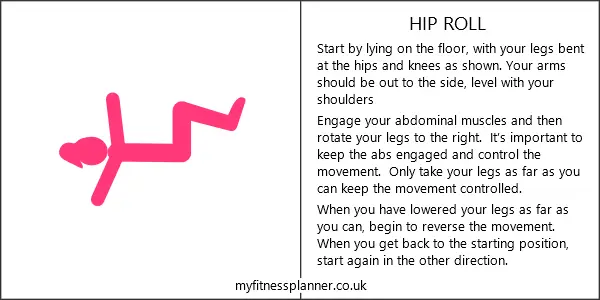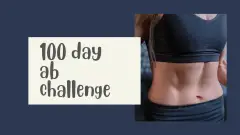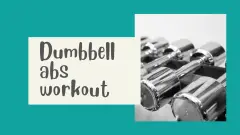The top layer of ab muscles has 6 segments that are easily visible in very trained bodies (the “6-pack”). It is in fact a single muscle, but the arrangement of the muscle tendons make it look like it’s in 6 sections. Although it’s one muscle, either the upper or lower part will be more active, depending on what exercise you do. The aim of this lower abs exercise workout is to target the lower part of the muscle. This part doesn’t get used as much in standard crunch type exercises. For best results follow the technique points below, to ensure the work is focused on the right muscles.
Lower abs exercise chart
This is a 6 week plan, with the intensity increasing every 2 weeks, as shown in the table. The exercise instructions are below the chart. The instructions for the Pilates 100 are based on doing the full 100 pulses – adjust this to the reps given in the table below for weeks 1-4.
Please see these general exercise guidelines before you do the workout.
You’ll need a cushioned surface to do the exercises on – ideally an exercise mat. See an exercise mat buying guide here.
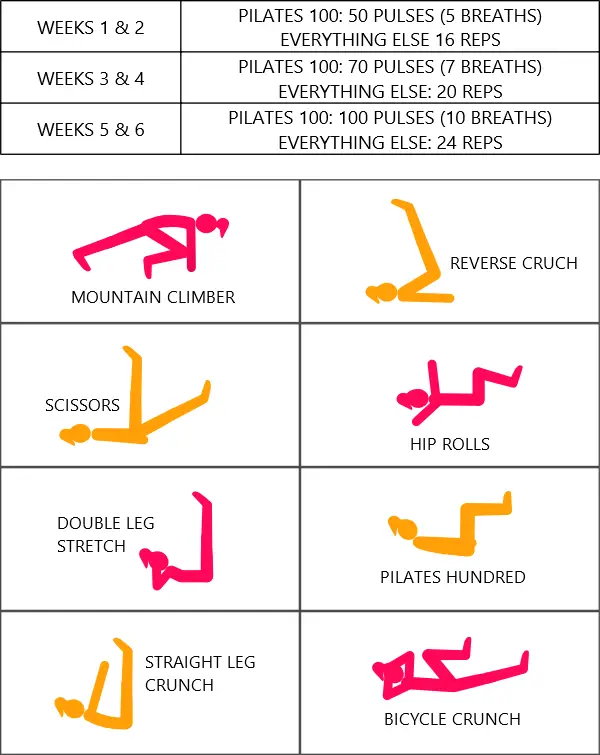
Exercise instructions
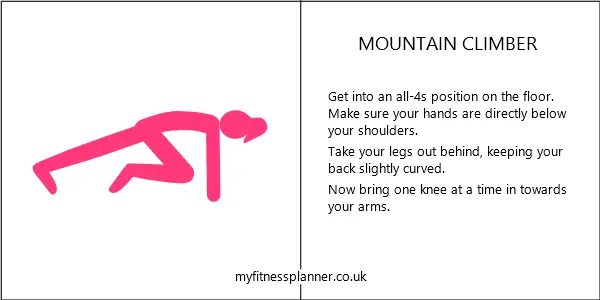
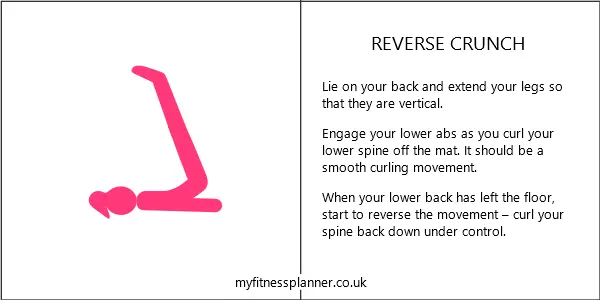
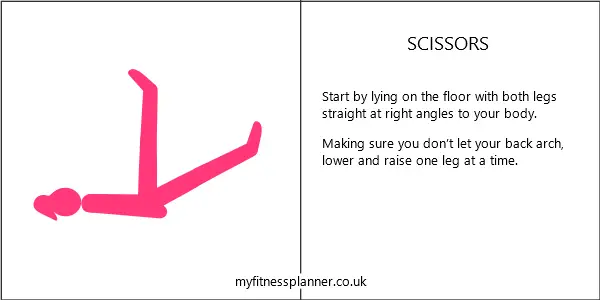
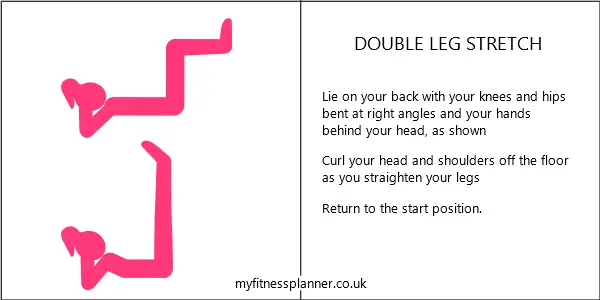

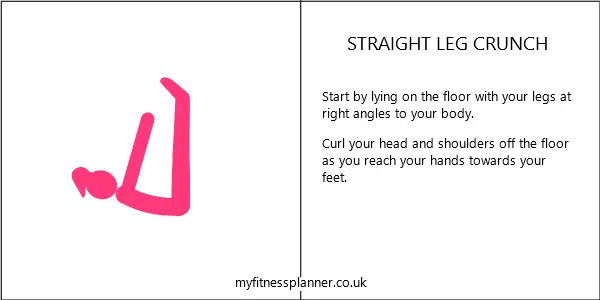
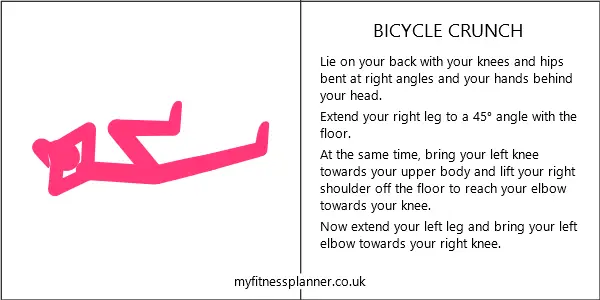
About the Pilates method
The history of the Pilates method The Pilates method, often referred to as simply Pilates, is a system of physical strength fitness that emphasizes strength, flexibility, and endurance. Developed by Joseph Pilates in the early 20th century, the method has evolved into a widely practiced form of exercise.
Joseph Pilates, born in Germany in 1883, was a sickly child who suffered from asthma, rickets, and rheumatic fever. His ailments inspired him to explore various physical disciplines, including bodybuilding, gymnastics, yoga, and martial arts. Through his studies and experimentation, he developed a system of exercises aimed at strengthening the body and improving overall health.
After the first World War, Pilates moved to New York City and opened a studio with his wife Clara. They called their method “Contrology,” emphasizing the importance of mind-body control in achieving physical fitness. Their studio attracted dancers, athletes, and celebrities, who found Pilates to be an effective form of exercise for rehabilitation, injury prevention, and performance enhancement.
In the 1960s and 1970s, Pilates gained popularity beyond the dance community as people recognized its benefits for improving posture, core strength, and flexibility. However, it wasn’t until the late 20th century that Pilates became a mainstream fitness phenomenon. With the rise of the wellness movement and the endorsement of celebrities and athletes, Pilates studios began popping up around the world, offering classes for people of all ages and fitness levels.
Today, the Pilates method continues to evolve with new variations and interpretations while staying true to its core principles of breath, concentration, control, centering, precision, and flow.
Related to lower abs exercise chart
Ab workouts FAQ
The stock answer to this is that you can’t get rid of fat from a specific area. This is repeated frequently and emphatically by almost everyone involved in fitness. Given that it’s the go-to answer, you would think that there’s a pile of evidence to support it. In fact, the evidence is surprisingly weak. On the other hand, there’s no evidence that you can exercise to burn fat from a specific area either.
What we do know for sure is that our bodies have preferred places to store fat – and the abdominal area is one of them. So you’re not likely to have a fat-free belly until you’re a healthy weight. The best way to be a healthy weight is of course to have a healthy diet and to exercise regularly. Any exercise helps with weight control.
Even if it doesn’t burn belly fat, regular ab exercise will make a difference though. The deep core muscles pull the abdominal area flat and having a strong core can make a real difference. In fact it’s often the case that what people think is fat is just poor muscle tone allowing the abdomen to protrude.
So, the best things you can do to look slimmer around your middle are to make sure you’re a healthy weight and do some core training.
Plank holds have been an enormously popular abs exercise for years now. This is probably due to the buzz surrounding the exercise in the form of challenges and extreme hold times, rather than being due to its merits as an effective exercise.
Done correctly, the plank will engage the deepest abdominal muscle, the transverse abdominis (TA). This is the one that plays the biggest part in pulling the abdominal area in flat, as well as playing an important role in pelvic and spinal stability. It’s a challenging exercise and most people will struggle to hold the correct position for more than a minute. These are the good points. However, the plank has its drawbacks:
- Doing it with correct technique is difficult for those who are not used to core training. To be effective, the back and legs must form a straight line (like a plank). Inexperienced exercisers fail to do this.
- It’s a static exercise (ie the muscles are held contracted). There are two problems with static exercises. One is that the muscles are only worked in one position and the other is that it causes blood pressure to increase.
- It’s not functional – we do nothing vaguely resembling the plank in every day life. If we want to train our TA to engage when we’re active, then holding it in a static contraction isn’t the best way.
So should you do plank holds? Yes, it’s good to add them to your abs routine sometimes or to do a plank challenge for variety. But you should make sure your technique is correct and you shouldn’t waste your workout time trying to build up excessively long holds.
As with most “best exercise” questions, the answer depends on what you’re trying to achieve. The two main goals people have are flat abs and 6 pack abs. To have a flat abdominal area you need to train the deeper abdominal muscles. This is done by doing core stabilising exercises. The 6 pack muscles are the top layer of ab muscles and are trained by crunches and similar exercises – any exercise in which the upper body and lower body come closer together against a resistance. If you want to train all your ab muscles, bicycle crunches are a good all-round exercise.
Further reading
Pilates Spine Health – Pilates Exercise
